Proximity sensors are types of sensors that are used to detect nearby objects without coming into physical contact. Their applications include detection, position, inspection, and counting in automated machines, robotics, and consumer products. In this article, we will discuss what is proximity sensor? proximity sensor types, working principles, and applications.
Refer this link to purchase proximity sensors online from Digikey.
What is Proximity Sensor?
Proximity sensors are the sensors that are capable of detecting the presence of nearby objects without coming in physical contact. They work by emitting an electromagnetic field and change in the field is detected by the proximity sensor.
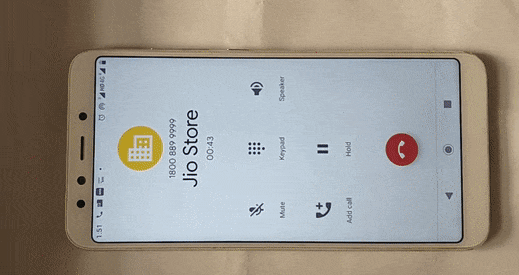
Sometimes Proximity sensors are also known as non-contact sensors because they don’t require any physical contact with the object to be sensed. For example, smartphones use proximity sensors to detect nearby objects.
As shown in the above image, smartphone LCD and touch are turned off to save battery life and unintentional operations when you put it in a pocket or near your ears during calls.
Types of Proximity Sensor
Following types of proximity sensors are used to detect objects without coming in physical contact. They are classified into various types according to the type of technology used to detect nearby objects.
- Inductive Sensor
- Capacitive Sensor
- Ultrasonic Sensor
- Photoelectric Sensor
- Magnetic Sensor
Inductive Proximity Sensor
The Inductive types of proximity sensors are used to detect metallic or ferrous objects by using the inductive properties of a material. Their range is limited by the magnetic field generated by the sensor.
An Inductive sensors have a narrow sensing range and are widely used in industrial automation applications for collision detection or to detect a part position.
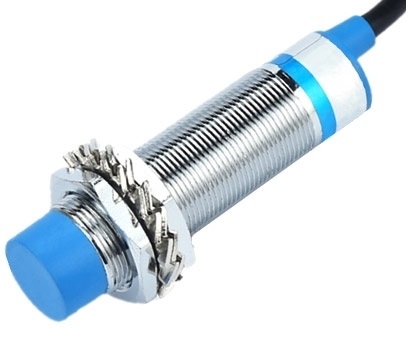
Working Principle of Inductive Sensor
An inductive sensor creates a symmetrical, oscillating magnetic field close to the sensing surface. The presence of the metallic object near the sensing area causes a change in the magnetic field. Any change in sensor magnetic field is detected by an inductive proximity sensor.
Capacitive Proximity Sensor
Capacitive type of proximity sensors can detect both metal and non-metallic objects by detecting any change in the capacitance between the sensing object and the sensor.
Sensing object dielectric constant affects the sensing range of the capacitive sensor. These sensors have a small detection range.
Capacitive Sensor Working Principle
A capacitive sensor works similarly to an open capacitor with two plates, and air acts as an insulator between them. The first plate acts as a sensing surface, and we measure the capacitance of the second plate. A change in the capacitance between two plates indicates the presence of an object.
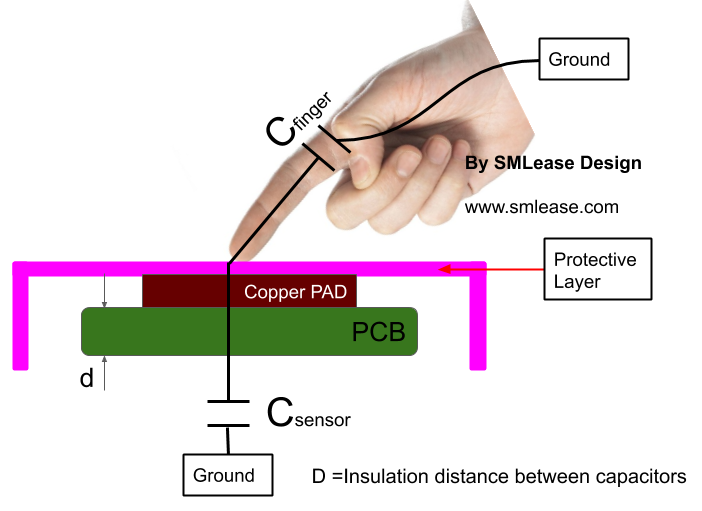
Capacitive sensors working as touch switches have applications in consumer electronics and IoT products. It eliminates the need for any physical switch. As a result, we can save additional plastic parts and tactile switch costs. The capacitive switch also gives a premium look to a product.
Magnetic proximity sensors actuate in the presence of magnetic fields. They are used to detect magnets only.
The magnetic sensors have a high operating range compared to inductive sensors. They can detect magnetic objects through non-ferrous metal, plastic, wood, and walls.
Magnetic Sensor Working Principle
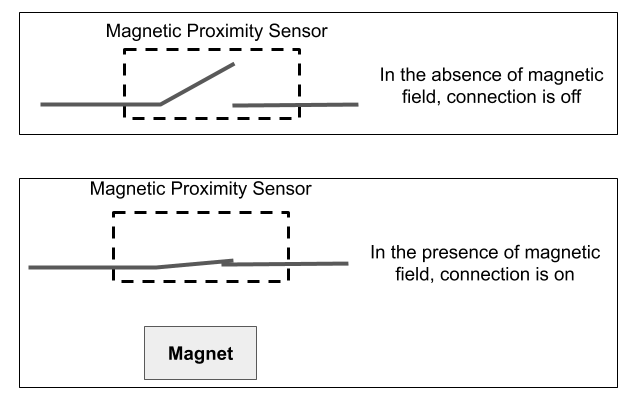
The image shown above is a type of magnetic reed switch. In the absence of magnetic fields, the electrical circuit in the magnetic reed sensor is disconnected.
When a magnet comes in proximity to the magnetic sensor, the sensor circuit connects and the current starts flowing.
Following types of magnetic sensors are available in the market. These sensors can be used as proximity sensor.
- Reed Switch
- Hall Effect Sensor
- Magneto-resistive Magnetic Sensor
- Magnetic Proximity Sensor
Photoelectric Proximity Sensor
Photoelectric proximity sensors consist of an emitter and a light receiver and utilize light-sensitive elements to detect nearby objects.
Their range varies from a few mm to 60-meter. Following Photoelectric Proximity sensor types are available according to how light beams are emitted and received by photoelectric sensors.
- Through Beam
- Retro-Reflective
- Direct Reflection Type
Through Beam Photoelectric Proximity Sensor
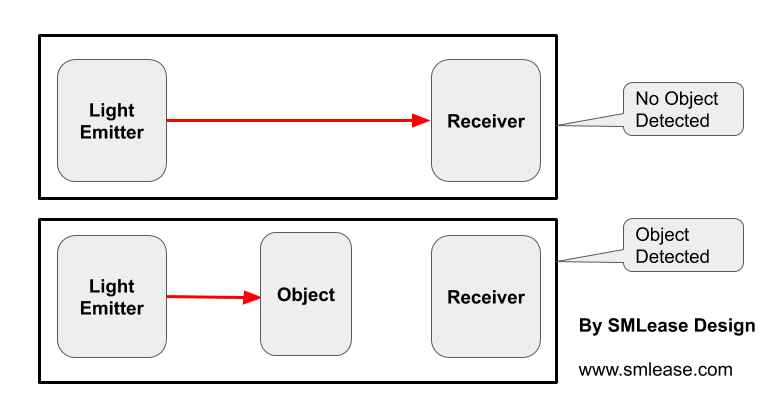
In through-beam photoelectric proximity sensors, the light emitter and receiver sensors are in a different housing. These sensors detect any interrupt between the light emitter and receiver. Through-beam sensors application is to detect objects at relatively large distances.
Retro-Reflective Photoelectric Sensor : Reflection with Reflector
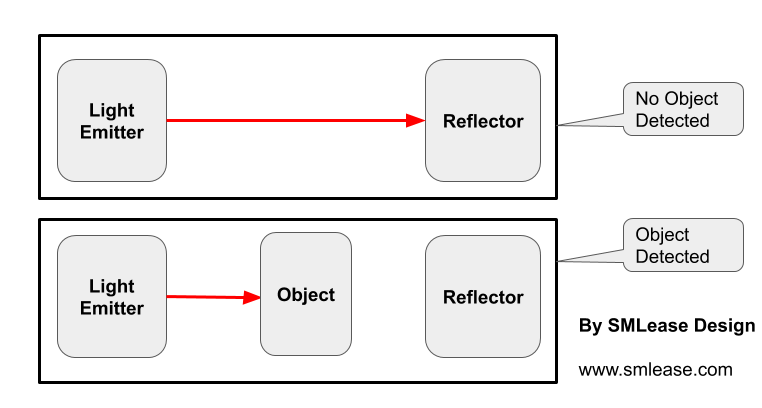
Light emitters and detectors are in a different housing in Retro-reflective proximity sensors.
In this, the light receiver or detector works as a reflector. It reflects the light to the sensor or light emitter. In this way sensor detects any object in-between the sensor and reflector.
Retro-reflective sensors have an approximately 10-meter range. Compared to through-beam proximity sensors, retro-reflective proximity sensors have the advantage of the convenience of wiring and save cost.
Direct Reflection Photoelectric Proximity Sensor : Diffuse Light Type
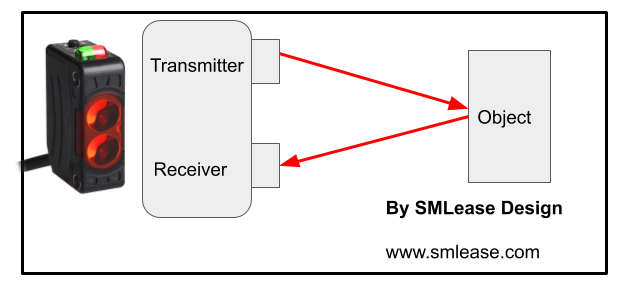
In direct reflection sensors, both emitter and receiver are in the same housing. The light emitted by the sensor is reflected by the object and comes back to the receiver.
Diffuse light sensors have applications in detecting objects at a relatively small distance. For example, direct reflection sensors are used in smartphones to detect nearby objects.
Ultrasonic Proximity Sensor
Ultrasonic sensors utilize sound waves higher than the human audible limit ~ 25 to 50 kHz to detect objects. Therefore object color and transparency do not impact the sensor’s ability to detect an object.
The ultrasonic proximity sensors have applications in manufacturing, robotics, and automation for detecting long-range objects.
Working Principle
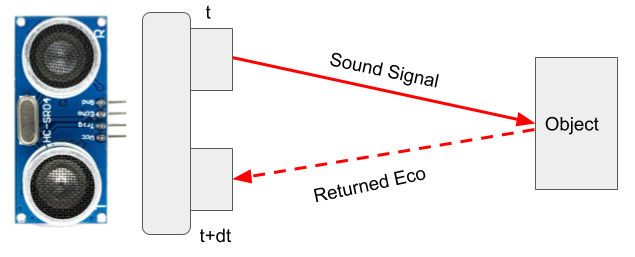
The ultrasonic sensor sends an ultrasonic pulse, and the object reflects it to the sensor. The time difference between send and received signals is used to calculate the distance between the objects.
Applications of Proximity Sensors
Proximity sensors have industrial and manufacturing applications because of their ability to sense objects without coming into physical contact. Here are the applications of various types of proximity sensors.
- Used on automated production lines for object detection, position, inspection, and counting.
- Smartphones use proximity sensors to detect whether the user’s smartphone is near their face or in their pocket.
- Part detection on industrial conveyor systems.
- Collision detection in different types of robots.
- Capacitive proximity sensors also work as touch switches on consumer electronics products.
- Advance washrooms use diffuse sensors to control water flow.
To sum up, the Proximity sensor can detect the presence of nearby objects without coming into physical contact. They have applications in consumer electronics products, robotics, manufacturing, and industrial automation.
We will keep updating this article on various types of proximity sensors. Please add your comments, questions, or suggestions on various types of proximity sensors.

I learn to sensor types and industrial using sensors and electrical drawing and automation systems in industries